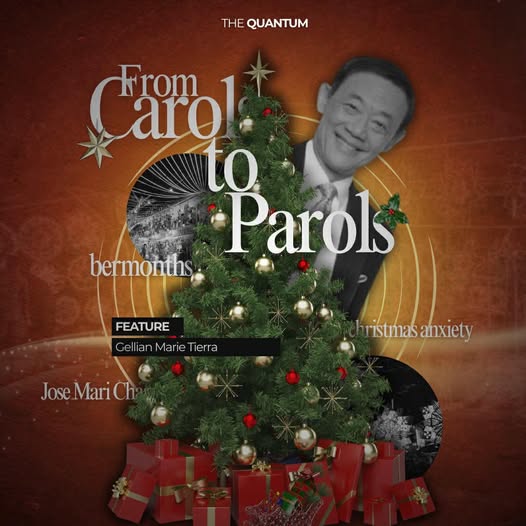by Gellian Marie Tierra
Copyedited by: Carlos Reily Agripa
Publication by: Peter Aslan Bien

Christmas is celebrated nowhere quite like in the Philippines. As soon as September arrives, malls echo with Jose Mari Chan’s medley, varicolored parols and holiday lights illuminate the streets, and anywhere you go, you’ll be met with a festive atmosphere. While the rest of the world waits for December, Filipinos set up their Christmas trees four months earlier, making the Philippines home to the longest Christmas season in the world.
Catholicism plays a central role in how Filipinos celebrate Christmas, but it isn’t the sole reason the merriment begins so soon. The liturgical calendar shows that the formal preparation for Christ’s birth, known as Advent, doesn’t actually start until late November, with the four Sundays leading to Christmas Day.
If not purely religious, what drives this four-month-long holiday spirit?
“Christmas anxiety” is something many Filipinos experience as they strive to make the holiday season perfect for their families. The long celebration means months of preparing decorations inside and outside homes, finding the perfect gift for loved ones, and overwhelming endless expenses.
According to sociologist Bro. Clifford Sorita, the early start of Christmas in the Philippines is due to a psychological countdown framework. Beginning on September 16, the 100-day countdown helps Filipinos manage holiday-related stress by providing ample time to prepare. It acts as a “secondary motivator,” allowing people to better allocate their time to important tasks like gift-buying and decoration.
Instead of letting Christmas time turn into a nightmare of sold-out essentials and overcrowded grocery lines, Filipinos learn to manage their time efficiently and wisely to enjoy the rest of their “Ber Months”.
The Ber Months are not only about tradition and festivities—they also bring significant economic and social effects across the country. This lengthy celebration boosts consumer spending, which helps the economy to flourish. Malls and markets see increased sales as early as September, particularly in early gift purchases, clothing, and decorations.
The demand for parols, Christmas lights, and holiday treats like Puto Bumbong, Leche Flan, and Hamón rises during Ber Months, which profits small businesses and street vendors, helping them to also prepare Christmas for their families. In Divisoria, stalls overflow with fairy lights, Santa hats, and affordable toys — making it the perfect place for Filipinos to shop for Christmas essentials. The bustling market comes alive with the chatter of vendors, eager buyers, and glitter of decorations that fall to the ground. This prolonged holiday season has been referred to as an “economic stimulus” that keeps local companies and jobs afloat in the year’s last quarter.
Socially, Ber Months help reconnect friends and families together again. Filipinos organize and plan reunions, Christmas parties, and attend Simbang Gabi with their loved ones, participating in small but meaningful customs because of the early preparation. This season’s social component emphasizes Filipino virtues of hospitality, generosity, and community.
This last quarter in the Philippines is also a feast for the senses. Everywhere the eye lands, there’s prismatic lights and a kaleidoscope of decorations that evoke familiarity and nostalgia. Streets are adorned with varicolored parols, houses wrapped with glimmering lights, and malls transformed into winter wonderlands, even in a country with no snow.
The sounds of Christmas are unmistakable. As soon as September begins, Jose Mari Chan’s timeless carols fill shopping malls, jeepneys, and radio stations. Choirs rehearse for Simbang Gabi, while children roam neighborhoods singing carols with makeshift tambourines and drums made of bottle caps and cans to earn a little bit for themselves. The music is a constant reminder that the season of joy has arrived.
But perhaps the most indelible of all is the feeling. It’s the warmth of neighbors greeting each other with “Merry Christmas” in this tropical late November. It’s the anticipation of seeing your distant family members in reunions happening just before Christmas. It’s the sweet feeling after eating Bibingka and Puto Bumbong that’s never the same with each homemade recipe. And it’s the bubbly, light-hearted feeling while wrapping presents, wanting the receiver to appreciate it as much as you do them.
Christmas is more than just a time of year in the Philippines; it’s a drum that begins to beat in our hearts as early as September. We start not because we are impatient but rather because love demands time: time to find gifts that come with love, time to hang parols that light up our nights, and time to create memories that will endure beyond the year and the season.



